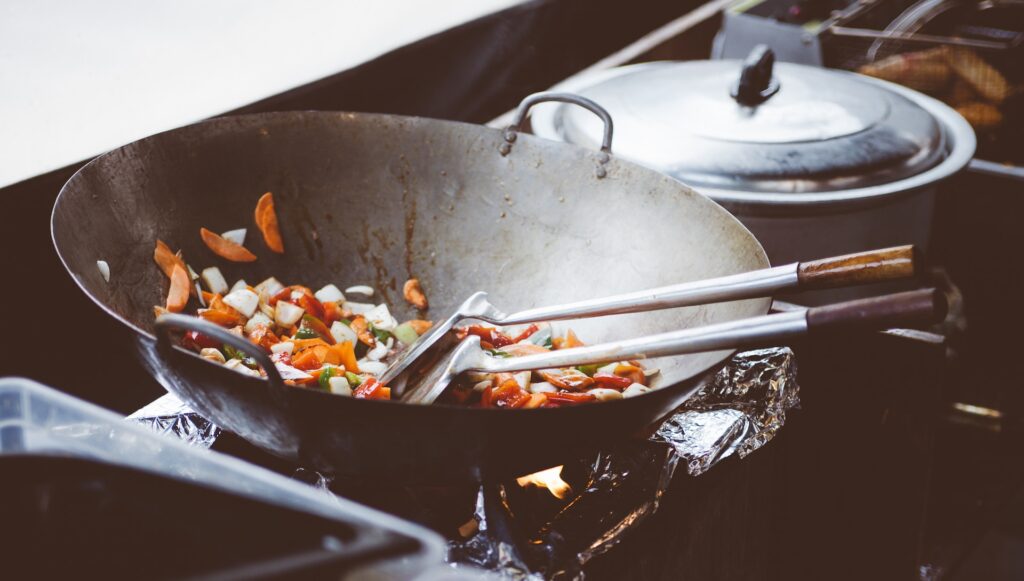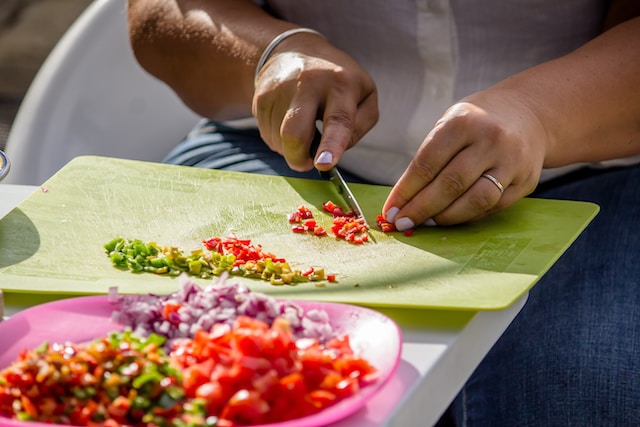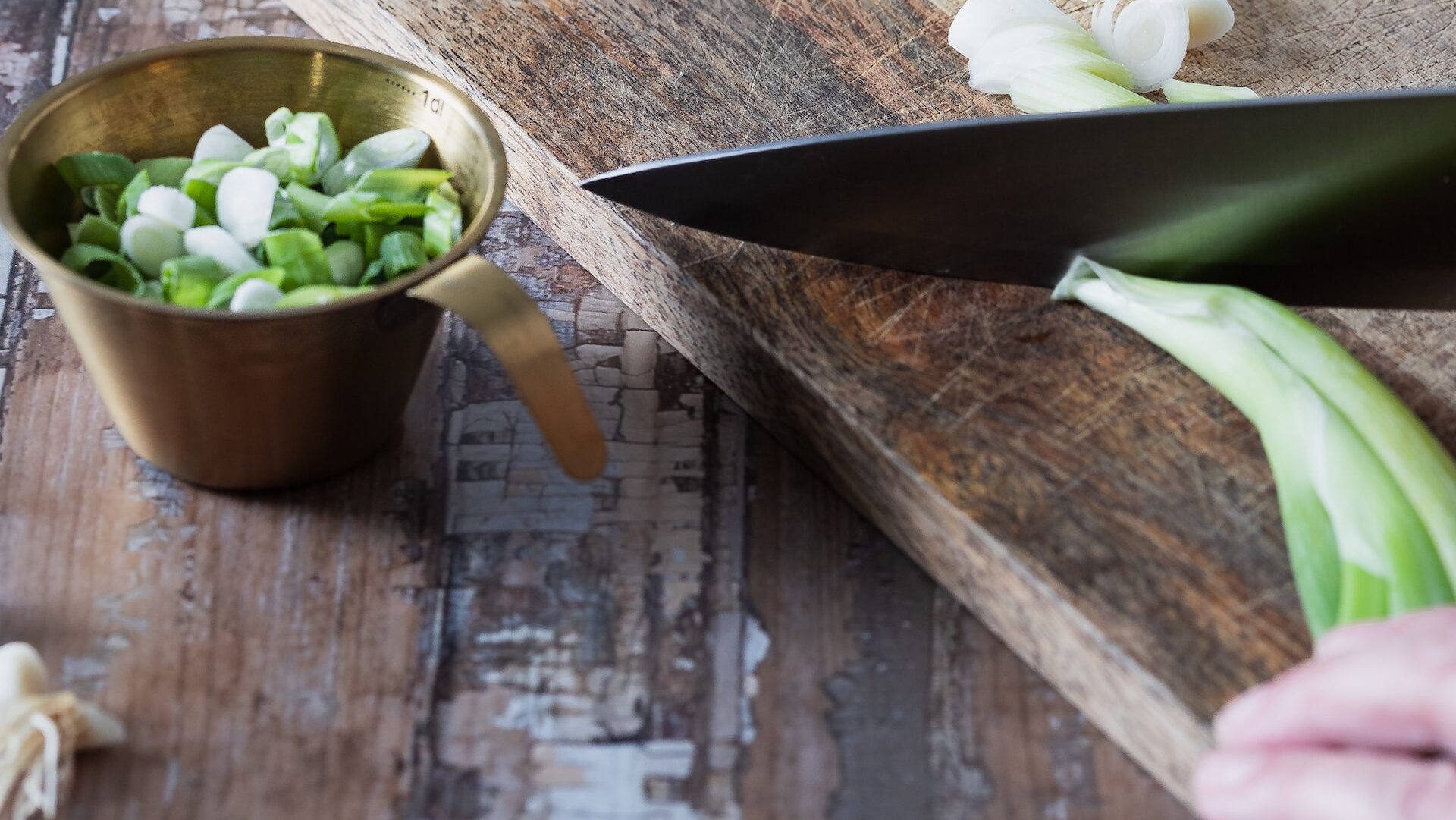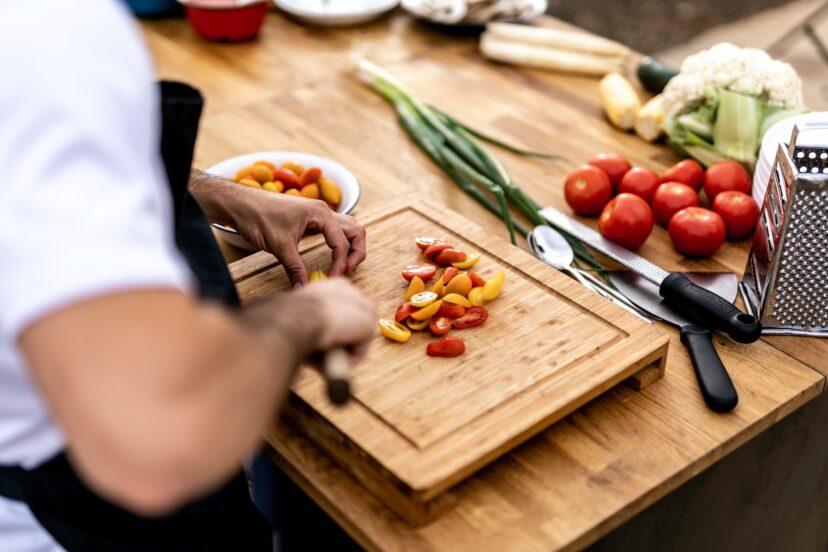Modular Outdoor Kitchen | Design, Tips & Brands
Why Choose Modular?
The magic of outdoor cooking meets modern design in the modular outdoor kitchen. But what does “modular” really mean in this context, and why should it be your top choice? Let’s break it down.
What is a Modular Outdoor Kitchen?
A modular outdoor kitchen consists of individual, standalone components that can be combined in various configurations. Think of it like building blocks for adults, but instead of toys, you’re working with kitchen units. Each module, whether it’s a grill, a sink, storage, or any other component, is designed to fit together with other units, offering a tailored kitchen experience. The primary goal is to provide flexibility, adaptability, and convenience.
Benefits of Modular Design
1. Customization: Unlike traditional outdoor kitchens, which often come in pre-defined setups, modular designs can be customized to your exact preferences. Want an extra burner or a larger storage area? No problem! Just add the module you want.
2. Scalability: Starting with a limited budget? Begin with the essentials and then expand as you go. Your kitchen can grow with your needs and desires.
3. Space Optimization: Given their flexible nature, modular units can be arranged to best utilize the available space. Whether you have a compact balcony or a sprawling backyard, you can design an optimal setup.
4. Easy Upgrades: Tired of your old grill or need a bigger sink? Simply replace the module. This design ensures you’re not stuck with outdated or undersized components.
Flexibility in Choices
A modular approach celebrates individuality. Here’s how:
1. Vast Component Selection: From different types of grills and ovens to various storage units and even specialized modules like wine chillers or pizza ovens – the choices are nearly endless.
2. Stylish Options: Want a rustic vibe or a sleek modern look? Modular designs come in various finishes and styles, ensuring your outdoor kitchen mirrors your personal aesthetic.
3. Budget Flexibility: Whether you’re on a tight budget or ready to splurge, you can find modules that fit your financial scope. Mix and match high-end components with more budget-friendly options.
4. Adaptability to Change: Hosting a big party and need more cooking space? Or maybe you’ve taken up baking and want an outdoor oven? The modular design ensures you can adapt to changing needs without overhauling the entire setup.

Components of a Modular Outdoor Kitchen
Creating the perfect modular outdoor kitchen isn’t just about choosing what’s trendy or luxurious, but also selecting the components that align with your culinary aspirations and the conditions of your outdoor space. Let’s dive deeper into the essential elements that make up a modular kitchen.
Cooking Stations
The heart of any kitchen, be it indoors or out, is where the actual cooking happens. And in outdoor modular kitchens, there’s an impressive array of choices:
1. Grills: Ranging from charcoal, gas, to electric, grills are a must-have. Depending on your preference, you can choose from built-in or freestanding units, each coming with a variety of features like side burners or rotisseries.
2. Smokers: For those who love that deep, smoky flavor in their food, smokers are essential. They come in various sizes and types, including wood pellet, electric, and charcoal.
3. Pizza Ovens: Who doesn’t love a freshly baked pizza? Outdoor pizza ovens can be a unique addition, allowing you to churn out pizzeria-quality pies.
4. Side Burners: These are great for sauces, stir-frying, or boiling. Think of them as the handy assistants to your main cooking apparatus.
5. Teppanyaki Griddles: Inspired by Japanese cuisine, these flat griddle plates are perfect for searing and stir-frying right in front of your guests.
Remember, the best cooking station is the one that caters to your specific needs and complements your cooking style.
Storage Units
No kitchen is complete without adequate storage. And just because it’s outdoors doesn’t mean you have to compromise on this:
1. Cabinets: Just like indoor kitchens, outdoor ones need cabinets too. Ideal for storing tools, non-perishable items, or even your stash of charcoal.
2. Drawers: For those smaller items like utensils, spatulas, or even your secret spice mixes, drawers are perfect.
3. Refrigeration Units: Keep your drinks chilled or store fresh ingredients without the need to run back and forth to your indoor fridge.
4. Pull-Out Trash Bins: Maintain cleanliness with concealed pull-out bins, making trash disposal convenient and unobtrusive.
Weather-resistant Features
Outdoor kitchens face the wrath of Mother Nature, so ensuring they stand up to various elements is crucial:
1. Material Choice: Stainless steel is often the go-to choice due to its rust-resistance and durability. Other options include treated wood, stone, or specially designed outdoor-grade materials.
2. Weatherproof Covers: These are essential, especially for electronic components or areas that aren’t used frequently. They protect from rain, snow, and even intense sun.
3. Sealed Storage: This ensures that any stored items remain dry and safe from the elements. Think of sealed cabinets or storage units with rubber linings.
4. Drainage Systems: Especially vital in regions with heavy rainfall. Good drainage ensures that water doesn’t pool in or around your kitchen components.
5. UV-resistant Countertops: These prevent fading and wear from the harsh sun, ensuring your countertops remain vibrant and durable.

Designing Your Space
When it comes to outdoor cooking we want to create a space that’s both functional and stylish. The beauty of modular outdoor kitchens lies in their adaptability, allowing you to customize according to your area’s specificities and your personal style. Here’s a closer look at how to go about designing your modular outdoor kitchen.
Considering Space and Layout
The first step to a successful outdoor kitchen is understanding the space you’re working with. Let’s map out some pivotal considerations:
1. Evaluate the Area: Before you purchase or install anything, measure your available space. This will dictate the size and quantity of the components you can accommodate.
2. Flow & Functionality: Think about how you’ll move in the space. You want a layout where you can effortlessly transition from, say, the grill to the prep area or from the fridge to the burner.
3. Zoning: Break your kitchen down into zones. A cooking zone (grills, burners), a prep zone (counters, chopping areas), a cleaning zone (sinks, trash areas), and possibly a serving or dining zone.
4. Safety First: Ensure that hot zones like grills are at a safe distance from high traffic areas, especially if kids are around. Also, consider the placement of fire extinguishers or other safety tools.
5. Integration with Landscape: If you have a garden, pool, or any other landscape feature, think about how your kitchen can complement these. Perhaps your kitchen offers a view of the garden or aligns with a pool deck.
6. Utility Access: Consider proximity to gas, electricity, and water sources. It’s easier and more cost-effective if your outdoor kitchen is close to these utilities.
Choosing the Right Materials
The materials you pick not only influence the kitchen’s look but also its longevity. Here’s a guide to making the best choices:
1. Climate Considerations: The weather in your area plays a significant role. For humid climates, rust-resistant materials like stainless steel are great. For sunny locales, UV-resistant finishes can be beneficial.
2. Durability: For countertops, materials like granite, bluestone, or concrete are durable and can withstand the outdoor elements. For cabinets and storage, stainless steel or marine-grade polymers are top choices.
3. Aesthetics: While functionality is crucial, you also want your kitchen to look good. Natural stones like granite or slate can add an elegant touch. If you’re going for a rustic vibe, treated wood or brick might be more your style.
4. Maintenance: Some materials require more upkeep than others. Stainless steel, for instance, is relatively low-maintenance, but it might show smudges. Natural stone is sturdy but might need sealing to prevent stains.
5. Cost: While it’s tempting to go for the most luxurious materials, it’s essential to strike a balance between cost, durability, and aesthetics. Sometimes, mixing and matching – like having a stainless steel grill but a concrete countertop – can offer both functionality and savings.
6. Eco-friendliness: If sustainability is a concern, consider materials like recycled glass countertops or reclaimed wood.

Maintenance and Care
Investing in a modular outdoor kitchen is just the beginning. To ensure your setup remains in tip-top shape, offering both functionality and visual appeal, regular maintenance and care are important. Let’s delve into the techniques and preparations essential to keep your outdoor haven looking and performing its best.
Cleaning Techniques
A clean kitchen is not just appealing but also safer and more efficient. Here’s how to keep each component sparkling:
1. Grills & Burners: After each use, brush the grates to remove food residues. Every few months, deep-clean by removing the grates and burners, soaking them in a mixture of warm water and dish soap, then scrubbing off stubborn grime. Ensure you check for any blockages in the burners.
2. Stainless Steel Surfaces: Use a soft cloth and a mixture of water and mild detergent. Wipe in the direction of the steel grain to prevent scratches. For fingerprints or smudges, specialized stainless steel cleaners can be effective.
3. Stone Countertops: Wipe spills immediately to prevent staining. For cleaning, use a pH-neutral cleaner. Avoid acidic or abrasive cleaners as they can damage the stone. Sealing stone surfaces annually can also prevent stains and wear.
4. Wooden Elements: Clean using a mild soap solution and soft brush. If your wood begins to look faded, consider resealing or staining it to revive its appearance.
5. Refrigeration Units: Regularly wipe down the interior with a mixture of water and baking soda. Ensure the drainage systems are unblocked and clean the coils at the back to maintain efficiency.
6. Sinks & Faucets: For stainless steel sinks, a mixture of baking soda and water can help remove spots. For brass or other materials, find specialized cleaners. Ensure the drain is clear and regularly check for leaks.
Seasonal Preparations
The change of seasons, especially transitioning to harsher climates like winter or intense summer, demands special attention:
1. Winterizing: If you live in an area with freezing temperatures, winter preparation is crucial. Drain water lines to prevent freezing and potential damage. Cover your kitchen components with weatherproof covers to protect from snow and ice. If possible, store removable modules like refrigerators indoors.
2. Summer Prep: Before the peak of summer, check your refrigeration units to ensure they’re cooling efficiently. Clean the grill and burners, as they’ll likely see more use. Ensure shaded areas or install umbrellas to protect certain components from direct sunlight.
3. Spring Check: Spring is an excellent time for a thorough inspection. Check for any damage that might have occurred during winter, clean all components, and prep your kitchen for increased use.
4. Autumn Maintenance: Clear any fallen leaves or debris, as these can clog drains or become fire hazards near grills. As the weather cools, ensure your heating elements, if any, are functioning correctly.
Recommendations and Tips
Now that we’ve covered the essentials of designing, maintaining, and optimizing your modular outdoor kitchen, it’s time to delve into some recommendations and tips to elevate your experience. Whether you’re wondering about top brands or ways to save some cash, I’ve got some first hand advice just for you.
Top Brands to Consider
When setting up your outdoor kitchen, investing in reliable brands can make all the difference in durability and performance. Here are some top contenders:
1. Weber: A household name in grilling, Weber offers a range of grills, smokers, and outdoor kitchen essentials renowned for their quality and durability.
2. Lynx: If luxury is what you’re after, Lynx offers premium outdoor kitchen components, from grills to refrigeration units, all with cutting-edge features.
3. Bull Outdoor Products: With a comprehensive range of outdoor kitchen essentials, Bull is known for its combination of performance and aesthetics.
4. Danver: For top-tier cabinetry and storage solutions, Danver offers weather-resistant, sleek, and durable options for modular kitchens.
5. Kalamazoo: Catering to gourmet outdoor chefs, Kalamazoo’s grills, pizza ovens, and other offerings are as much works of art as they are functional cooking tools.
Money-saving Ideas
An outdoor kitchen is an investment, but there are several ways to get the most bang for your buck:
1. Plan Ahead: By meticulously planning your layout and components, you can avoid costly mistakes or unnecessary purchases.
2. Mix High-end with Budget: Invest in a few premium components where it matters most, like a good-quality grill, but consider budget-friendly options for less critical aspects.
3. Sales and Discounts: Off-season shopping can yield some great discounts. Keep an eye out for sales, especially around the end of summer.
4. Repurpose and Upcycle: Have some old cabinets or counters? With a bit of creativity and some refurbishing, they can be integrated into your outdoor setup.
DIY vs. Professional Installation
The debate between rolling up your sleeves or hiring a pro comes down to three factors:
1. Skill Level: If you’re handy with tools and have experience with plumbing or electrical work, a DIY approach can save costs. However, certain tasks, especially gas connections or intricate setups, might be better left to professionals.
2. Time Commitment: DIY projects can be time-consuming. Consider if you have the required time to dedicate to the project. Sometimes, hiring a professional can ensure the job is done quickly and efficiently.
3. Budget Constraints: While DIY can be more budget-friendly, remember that mistakes can be costly. Professional installation might be pricier upfront but can save potential headaches and expenses down the line.
In Conclusion
Modular outdoor kitchens are more than just cooking spaces; they’re an extension of our homes and a hub of social gatherings. As we’ve explored the different designs, maintenance, brands, and money-saving tips, it’s clear that these kitchens are customizable and you can tailor them to your tastes, your spatial constraints, and your budget.
FAQs
1. What’s the primary advantage of choosing a modular outdoor kitchen over a fixed one?
A modular outdoor kitchen offers exceptional flexibility. You can customize, rearrange, expand, or downsize components based on your evolving needs. Unlike fixed kitchens, they aren’t a permanent commitment, making them adaptable to different spaces and preferences.
2. How often should I clean or maintain my outdoor kitchen components?
Regular maintenance like wiping down surfaces, cleaning grates, and checking utilities should be done after every use or at least weekly. However, deep cleaning and seasonal preparations might be needed quarterly or biannually, depending on usage and climate.
3. Can I set up a modular outdoor kitchen in a smaller space or balcony?
Absolutely! The beauty of modular setups is their adaptability. You can select components that fit your space, be it a sprawling backyard or a compact balcony. Measure your area and choose modules that allow for efficient movement and functionality.
4. Are modular outdoor kitchens weather-resistant?
Most modular kitchen components are designed for outdoor use, meaning they’re built to withstand varying weather conditions. However, the longevity and appearance retention largely depend on the materials used and maintenance. Always opt for weather-resistant materials and consider protective measures like covers for added durability.
5.Is it possible to upgrade or add components to my existing modular kitchen in the future?
Yes, that’s one of the key advantages of modular kitchens. As your needs or preferences change, you can easily add new modules or upgrade existing ones. Whether you want to introduce a pizza oven, a new storage unit, or an upgraded grill, modular designs allow for seamless expansions.





Comments are closed.